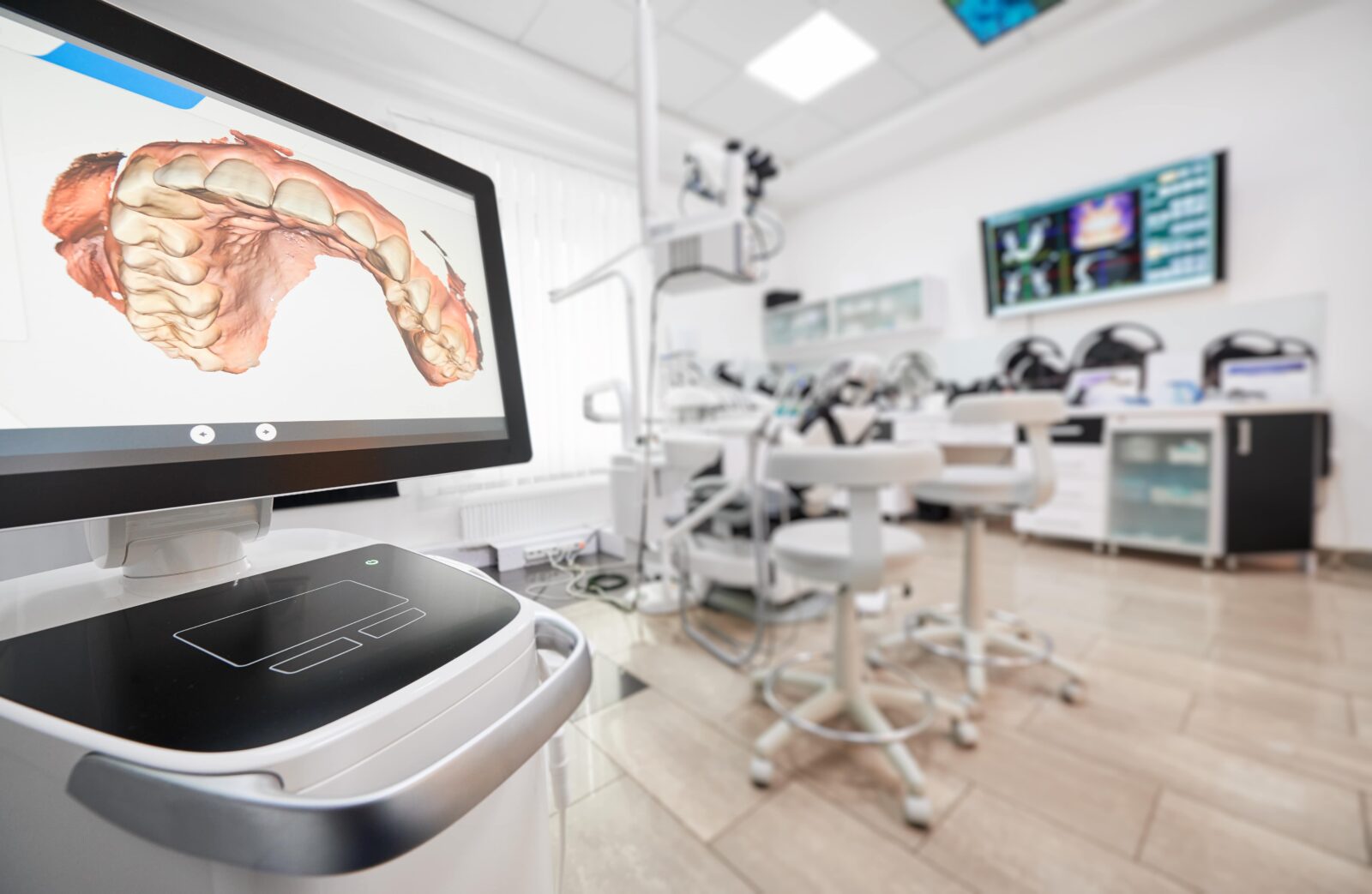Dental technology has improved so much over the past decade, making dental appointments easier, faster, and more comfortable than ever before. Even replacing missing teeth can be completed in a minimally-invasive manner quickly and comfortably, while still maintaining the structural and aesthetic integrity of the tooth replacement option. How is this possible you ask? Well, it’s thanks to the use of digitally guided dental implants.
It is quite possible that you have heard about dental implants before, but here is a little bit about them anyway. Dental implants are titanium screws that are implanted into the jawbone in order to act as artificial tooth roots. The implant screw is then connected to a dental prosthesis using a metal connector post called an abutment. Depending on the number of missing teeth, dental implants can be used to support a crown, bridge, or denture.
Implant-supported restorations are widely accepted as the best choice for tooth replacement options. This is because the implant screw provides enough strength to fully restore chewing function, as well as stimulates the jawbone to prevent bone resorption. This also means that the restoration does not move while speaking or eating, and it has a highly aesthetic appearance.
When it comes to having dental implants placed, there are various techniques that can be used. One of the more technologically advanced methods is digitally guided implant surgery. This method utilizes digital technology to scan and upload anatomical information to a computer software program that your dentist will use to develop a surgical template. This template will then be fabricated by a 3-D printer and used to place the implant or implants. Digitally guided implant surgery offers a variety of benefits and here are some reasons why you should consider seeing a dentist who offers this approach:
Highly Detailed Treatment Planning

The digital technology used in coordination with this approach allows for extremely detailed treatment planning. Before your surgery, your dentist will obtain computerized tomography (CT) images that will show the bones, nerves, blood vessels, and soft tissues around the treatment area. On their own, these images are highly detailed, however they will also be used in coordination with computerized software programs that allow your dentist to perform the surgery digitally. This means that your dentist will be able to preview the results of the surgery using a digital model. This also means that they can see your anatomy and make any adjustments to their approach before the actual procedure.
Lets You Preview Your Results
Another benefit of the digital technology used for dental implant placement is that it also allows you to preview your results before the procedure. In some cases, your dentist may also be able to show you different treatment options with different projected results. This allows you to be involved in your treatment plan and allows you to make informed decisions regarding your treatment plan.
Minimally Invasive
One of the main downsides about dental implants is the fact that they require oral surgery for placement. Although digitally guided dental implant surgery is still surgery, it is less invasive than other dental implant placement techniques. At a glance, digitally guided dental implant surgery minimizes the amount of bone grafting needed, requires less anesthesia, localizes the treatment area, and does not require sutures.
Allows for Same Day Teeth

No matter how long you’ve been missing teeth, chances are that you want your new teeth as soon as possible. With digitally guided implant surgery, you will be able to have new teeth once the procedure is completed. This is possible because the computer software program can accurately predict your treatment outcome and prints the necessary implant-supported restoration to fit with your treatment plan.
Easier Recovery
Just in case you are not already convinced, digitally guided dental implant surgery also has a shorter and less painful recovery process. Since this approach helps to localize the treatment site, it prevents the surrounding structures from being affected. Less trauma means that it will take less time to heal. Additionally, this technique does not require sutures. Sutures have been associated with the production of histamines and prostaglandins, both of which can lead to postoperative pain. No sutures means less postoperative pain.
